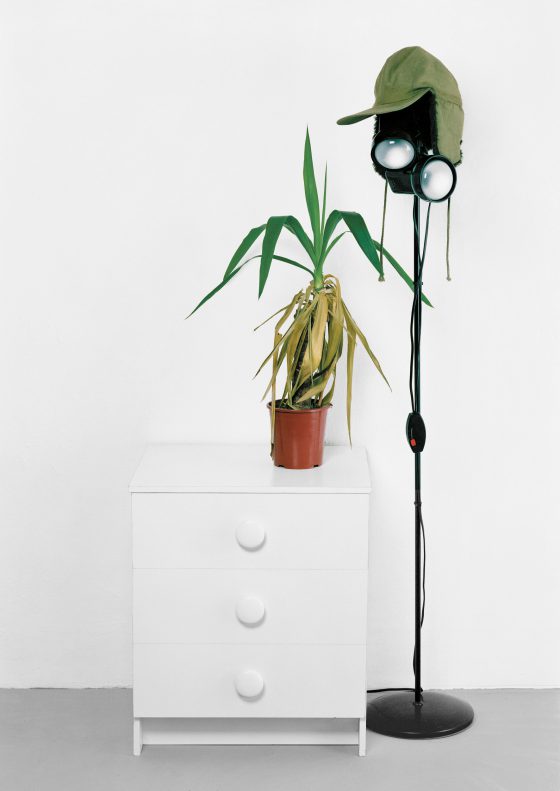to overview
Christopher Muller
Keep it Casual
from »Christopher Muller«, Städtisches Museum Abteiberg Mönchengladbach, 1994
My photographs of still lifes have developed over the last four years. They feature, primarily, ordinary household objects, such as buckets, lamps and chairs which one can find in shops or at home. I am interested in these domestic objects because they represent simple functions and patterns of commonplace usage around which much of everyday life appears to revolve. The objects I chose are characterized by a spartan utility – there is little in their design which isn’t directly related to practical application. Over the last four years I have amassed a collection of over a hundred objects that have each been used at least once in a photograph. I am intrigued by the way these simple, banal objects appear at times to break their silence and evocate or reflect a frame of mind. Consequently I select the objects on the basis that some original feature has caught my eye or they might relate to some other objects already in my collection. Then, through trying out the objects in various configurations and through endless drawings I explore their formal and functional characteristics as well as their relation to one another and the emptiness around them.
The objects are usually arranged against a white wall, on a grey floor. This provides a neutral and unambiguous space against which the complexities of the arrangement can be seen. The angle of the photograph approximates to a head-on confrontation with the objects much as in a daily encounter. The photos are enlarged so that the objects are life size (the photographs can get very large depending on the size of the arrangement). The arrangement itself, whether consisting of four or twenty objects, is evenly lit; no object casts a strong shadow, is highlighted or receives a hierarchical prominence within the arrangement. I do not try to force ‘meaning’ by manipulating the objects in an unrealistic way. Consequently although the objects are visibly arranged, the arrangement retains a casual feeling and the objects a sense of individuality.
Even within the parameters of what might constitute a daily encounter there is surprisingly wide room for "semantic” manoeuvre – objects left in an unexpected place or the peculiar visual qualities, such as the flattening, when the objects are glimpsed form a particular angle as caught by the camera.
I work with varying sizes of objects from small handheld objects, like toothbrushes and hammers to large objects which have a definite human scale, like standing lamps and bedroom cabinets.
In the past year I have done a number of new works in which the arrangement has been developed and photographed in a particular, recognizable space – an interior or a street – and sometimes I have included a user or a person. The foremost object in the foreground of the arrangement is enlarged to life-size in these pictures. The arrangement is no longer contained within the subdued confines of a white and grey background but within an environment that itself bears vestiges of transient everyday life – a window, a recess in the wall, the scarred side of a building. The shift from a nondescript to a specific location, which has the same pictorial prominence as the objects arranged in it, blurs the edges between what is arranged and what is merely background. Consequently the subject of the photo is not as clear as in the more contemplative and clearly ordered still lifes creating an altogether different emotional resonance. My primary interest however remains the same – to endow the objects or elements in a given arrangement or situation – a chair or an upturned bucket – with a startling power that is at once evocative and suggestive.

Same Old Yucca, 1990/92, 150 x 106 cm, C-print behind perspex